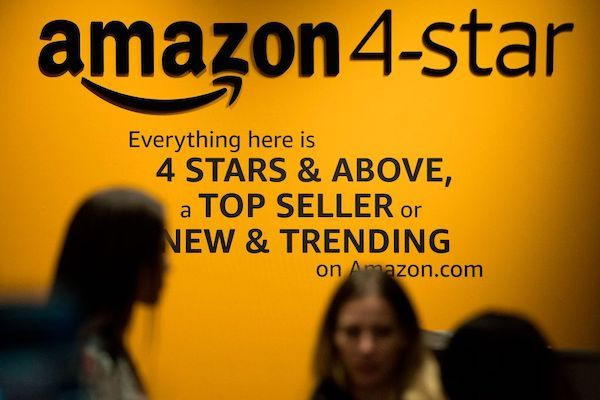3 Key Facts That Demonstrate Amazon's Retail Dominance

Amazon's (NASDAQ:AMZN) retail rivals have recently made some significant gains with their e-commerce businesses. For example, last quarter, Target (NYSE:TGT) increased its e-commerce sales by 49% year over year, while Walmart's (NYSE:WMT) online sales jumped 43%.
Additionally, both Walmart and Target have been aggressive in offering more -- and cheaper -- shipping options to better compete with Amazon's once-unique Prime perk of free, two-day shipping.
Despite those moves, a glance at the three key strengths detailed below makes it clear that even the most intense efforts of Amazon's top brick-and-mortar competitors won't be enough to allow them to catch up to the e-commerce giant.
1. 49% of all U.S. e-commerce sales in 2018 were on Amazon's platform
That's right, nearly half of all sales made on U.S. websites belong to Amazon. For reference, eBay has the second-largest share of online sales, and it only takes 6.6%, according to data from research firm eMarketer. For their part, Walmart only has a 3.7% share, and Target doesn't even rank in the top 10.
What's driving most of Amazon's sales? The computer and consumer electronics segment is its leading category, followed by apparel and accessories. And there appears to be plenty of room for Amazon to grow -- its online sales currently account for just 5% of total retail sales in the U.S.
2. More manufacturers are creating exclusive brands for Amazon
Amazon has its own line of products, called AmazonBasics, that range from power cords for iPhones to bed sheets, as a way of offering quality products for low prices. But a recent Wall Street Journal article reported on Amazon's push to get consumer goods companies to create cheaper versions of their branded products to sell exclusively on Amazon.
For example, mattress maker Tuft & Needle's new Nod brand can be found only on Amazon. GNC, Equal and others have created exclusive brands for the e-tailer as well; in return, those companies get special help when launching their new brands on its platform, and better placement for them within the company's search results, among other things.
The benefit for Amazon comes from being able to offer an even larger selection of quality, lower-priced products on its platform. And the very fact that companies are willing to create entirely new product lines shows just how much influence the company has.
3. More than half of all U.S. households will have Prime memberships in 2019
Finally, one of the most important indicators of Amazon's dominance is that more than half of all U.S. households will be Prime members this year. The appeal of free, two-day shipping on millions of products, along with a raft of benefits like access to the Prime Video and Prime Music streaming services, has convinced a steadily growing share of American consumers that it's worth the $119 annual fee. Just three years ago, only 35% of U.S. households had joined the loyalty program, but the percentage is forecast to reach 51.3% this year, and jump to 54.8% in 2020.
Why does this matter for Amazon? Because Prime members spend, on average, around $1,400 on the site annually, compared to $600 per year for the average Amazon customer, according to Consumer Intelligence Research Partners (CIRP).
Amazon has done a tremendous job of turning occasional customers into Prime loyalists over the years, and that trend shows no sign of slowing down. In fact, an analysis from Citi estimates that, by 2029, 80% of U.S. households will have Prime memberships and there will be 275 million active Prime memberships worldwide.
There's virtually no comparison
One might expect to see Amazon's dominance in the e-commerce space wane somewhat as rival retailers become savvier about their omnichannel strategies. But the conditions described above don't show that to be happening.
Amazon has created a wide moat for itself, and the willingness of consumer goods companies to develop Amazon-only lines indicates that its influence in this space is far from waning. In the wake of Amazon's 7% share-price slide over the past six months, this may be a good time for investors to take another look at the e-commerce king.
This article originally appeared in the Motley Fool.
John Mackey, CEO of Whole Foods Market, an Amazon subsidiary, is a member of The Motley Fool's board of directors. Chris Neiger has no position in any of the stocks mentioned. The Motley Fool owns shares of and recommends Amazon. The Motley Fool recommends eBay. The Motley Fool has a disclosure policy.





















